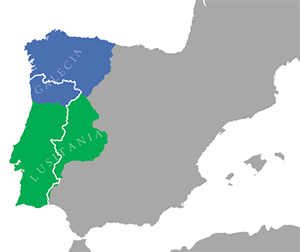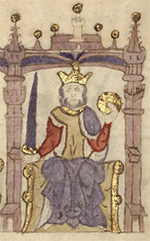Early Portugal
People have been living in what is now Portugal for a very, very long time. Archaeologists have found evidence of human habitation that is tens of thousands of years old. As did other civilizations, those who lived in the western part of what is now the Iberian Peninsula progressed through the stages of evolution and revolution, eventually trading with other civilizations, sending tin to the Phoenicians, for example. Also settling in the area were Celts, who populated much of Europe. Celtic peoples also settled notably in Britain and France, where they were known to the Romans as Gauls. One of the most well-known Celtic tribes in Portugal were the Lusitani. This tribe resisted the rule of Rome, which arrived in 210 B.C. Under the powerful leader Viriatus, the Lusitani resisted Roman occupation for several decades, succumbing in 139 B.C., when Viriatus was captured and later killed. 
Famous Romans Julius Caesar and Augustus Caesar; the latter founded Augusta Emerita as Mérida, the Lusitanian capital. The northern part of what is now Portugal (north of the Douro) became a separate province, named Gallaecia (Galicia), under the Roman emperor Diocletian in A.D. 298. That province had as its capital Bracara Augusta. As the Roman Republic became the Roman Empire, Lusitania, as what is now Portugal was called, thrived. In the same way, when the Empire faltered from foreign invasion, so, too, did Lusitania. As Rome was beset by invasions from Germanic peoples, one of those, the Suevi, invaded Lusitania and another, the Vandals, invaded Gallaecia. Nearly a century later came another tribe, the Visigoths, who had a good time of it in Spain as well. One of the early settlements at the mouth of the Douro River was Cale. The Romans conquered it and renamed it Portus Cale, or Port of Cale. The ruling Suebi and Visigoths referred to the city as Portucale, and this is the origin of the name of the modern country. 
Another common enemy arrived in 711 in the form of the Moors. They were very successful at conquering the Iberian Peninsula, taking hold of it, renaming it Al-Andalus, and keeping most of it for generations, before giving way in the face of a united effort by Portuguese and Spanish forces. As in Spain, Portuguese tradition had a Reconquista, a retaking of lands by Christians advancing against Muslims. Pelagius in 722 founded the Kingdom of Asturias as a means to that end. That kingdom thrived for awhile but eventually lots its cohesion, descending into two regions, Galicia in the north and a vassalage of the Spanish Kingdom of León in the south. The former had to fend off a Viking invasion in 968; the latter became embroiled in various succession intrigues in Spain.  Another of the peoples to invade the area that is now Portugal were the Burgundians, who, in the wake of the decline of the Roman Empire, did battle earlier with the Vandals and later with the Franks. Remnants of the Burgundian tradition lived on after the 6th Century defeat at the hands of the Franks, and a Burgundian noble named Henry declared Portugal independent, near the end of the 11th Century. Cementing that independence was Henry's son, Afonso Henriques, who became the first King of Portugal.
|
|
Social Studies for Kids
copyright 2002–2026
David White




